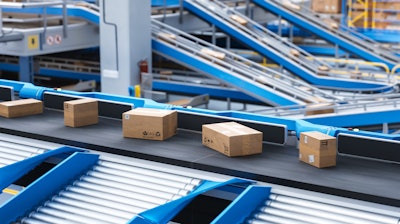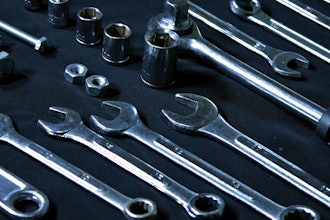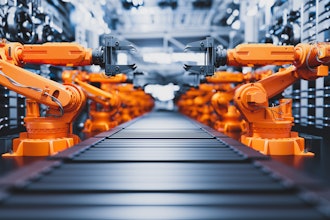
Optimizing warehouse operations is critical for today’s warehouses and distribution centers to reduce errors, achieve faster fulfillment and improve customer satisfaction. However, with the rise of e-commerce, changing customer expectations, escalating shipping costs and more stringent carrier requirements, warehouses must continue to evolve to avoid being left behind.
Throughout our 35-year history, we’ve seen it all. With the best of intentions, distributors have tried numerous innovative approaches in their warehouses only to be surprised (and not always pleasantly) by the outcome. To help you learn from others’ missteps, here are some of the most common “gotchas” to avoid when it comes to modernizing warehouse operations.
Purchasing and Integrating New Material Handling Equipment
The decision to purchase material handling hardware is too often made in a vacuum and without considering how it must integrate into other processes in the warehouse, resulting in challenges to manage down the road. Additionally, a poorly managed integration can negatively affect the ROI of new material handling equipment, leaving this equipment idling, taking up space and hindering short-term productivity in the warehouse.
It’s been my experience that those making the purchasing decisions may not appropriately consider critical steps in the fulfillment process. Consider a company that procures horizontal carousels that are not optimized to product type or have been misconfigured. This results in hindering a picker’s productivity. Similarly, conveyor systems that are not optimized can interfere with meeting shipping commitments.
To avoid such missteps, make sure to consult the right suppliers early in the selection process for perspective on how systems can and should complement each other. Managing warehouse operations presents an interactive ecosystem that must be understood firmly before committing to a material handling investment that falls short of your warehouse throughput objectives.
Moving the ERP System to the Cloud
Moving your ERP system to the cloud before your company is ready can present a host of issues. The move requires careful study of how it aligns with your organization’s operations, the long-term benefits of a cloud solution and the likelihood that these benefits will be achieved.
When considering a cloud migration, company leadership must assess a cloud-based ERP system’s flexibility (or lack thereof). They must also consider any process changes that must be made as their business evolves and the long-term commitment (e.g., via a binding legal contract) to a cloud model. Such agreements can be more restrictive regarding usage and subscription commitments, which must be considered.
Skipping the process of conducting thorough research can lead to unexpected and disappointing results. Some of the companies we’ve engaged with were surprised to encounter a lack of system performance when using a cloud-based SaaS ERP system, resulting in reduced productivity rates across the board that they didn’t expect.
Outsourcing the IT Department
Opting to outsource IT functions can present risks, as there can be instances where a company’s upper management team doesn’t fully understand or grasp the range of responsibilities that its IT department oversees. Or the outsourced IT department can oversimplify the tasks before them, particularly if customizations have been made to meet a company’s unique objectives.
Here’s a real-world example: We previously worked with a company whose newly contracted IT department didn’t know they were responsible for updating the UPS fuel surcharges each month. Amid rapidly soaring fuel prices, this was a big deal, but it wasn’t until an audit of their shipping invoices more than a year later that the IT department realized the magnitude of this oversight. The cost to the company was approximately $100,000 in lost fuel surcharges. As a result, the company purchased shipping software that included automatic surcharge updates to help ensure the problem did not happen again, but only after a hit to the company’s bottom line.
Other Common Pitfalls to Avoid
There are several other areas that can present potential challenges with warehouse modernization if they’re not appropriately managed. Overlooking these details can spell disaster:
- Data/Inventory Accuracy: Maintaining accurate inventory data is essential. Errors in data can lead to stockouts, excess inventory or mispicks.
- System Scalability: As your business grows, your systems should be able to scale without major overhauls. Leaning into scalable solutions can help avoid the pain of constant system upgrades and replacements.
- Mobile Device Compatibility: Ignoring the need for mobile compatibility can hinder warehouse efficiency. Ensuring that your WMS and other systems are compatible with mobile devices can significantly streamline warehouse operations.
- Time and Resources for Implementation: Underestimating the time and resources needed to implement new systems or equipment can delay benefits and increase costs. Proper planning and resource allocation can help ensure a smooth transition.
- Customization vs. Off-the-Shelf Solutions: Settling for off-the-shelf solutions without considering customizations can lead to mismatched processes and other inefficiencies. Tailoring solutions to meet your specific needs can often provide better ROI and operational benefits, delivering more immediate results.
- Compliance and Security: Ignoring compliance and security requirements can result in legal issues or data breaches. Ensuring that your systems meet industry standards and regulations is yet another important aspect of warehouse modernization.
How to Avoid Warehouse Modernization Pitfalls
When looking to modernize your warehouse and address operations pain points, doing your due diligence is key. It is critical that an organization fully understands its current material handling and order fulfilment requirements and the process steps in place to achieve them. Trying to solve problems – that may or may not exist – without fully understanding them first is a recipe for wasting resources.
My advice is to always seek expert input. Verify expert recommendations with on-site visits to material handling users who have worked through warehouse management issues and concerns to achieve the best performance in their hardware and software investments. Plan for future developments you foresee such as potential expansion, process changes and material handling reconfiguration as your business needs evolve.
When modernizing your warehouse, avoid the all-too-common misstep of implementing blanket solutions without considering your unique requirements. Engage with experts, perform on-site validations and anticipate future needs to make informed decisions. Ultimately, a strategic approach, combined with expert insights, can guide your warehouse to enhanced efficiency and productivity. Remember, the journey to modernization is ongoing — remain agile and adaptive to continually meet evolving business demands.
Eric Allais is the president and CEO of PathGuide Technologies.























